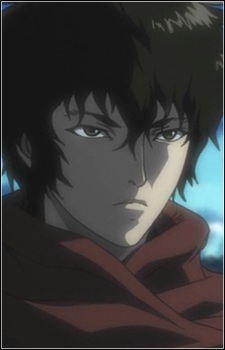
Kurou
クロウ, Minamoto no Yoshizune
15
Yoshitsune was born during the Heiji Rebellion of 1159 in which his father and oldest two brothers were killed. His life was spared and he was put under the care of Kurama Temple nestled in the Hiei Mountains near the capital of Kyoto while Yoritomo was banished to Izu Province. Eventually Yoshitsune was put under the protection of Fujiwara no Hidehira head of the powerful regional Northern Fujiwara clan in Hiraizumi Mutsu Province. A skillful swordsman he defeated the legendary warrior monk Benkei in a duel. From then on Benkei became Yoshitsune039s righthand man eventually dying with him at the Siege of Koromogawa. In 1180 Yoshitsune heard that Yoritomo now head of the Minamoto clan had raised an army at the request of Prince Mochihito to fight against the Taira clan also known as the Heike which had usurped the power of the emperor. Yoshitsune shortly thereafter joined Yoritomo along with Minamoto no Noriyori all brothers who had never before met in the last of three conflicts between the rival Minamoto and Taira samurai clans known as the Genpei War. Yoshitsune defeated and killed his rival cousin Minamoto no Yoshinaka at the Battle of Awazu in mi Province in the first month of 1184 and in the next month defeated the Taira at the Battle of IchinoTani in present day Kobe. In 1185 Yoshitsune defeated the Taira again at the Battle of Yashima in Shikoku and destroyed them at the Battle of Dannoura in present day Yamaguchi Prefecture. After the Gempei War Yoshitsune joined the cloistered Emperor GoShirakawa against his brother Yoritomo. Fleeing to the temporary protection of Fujiwara no Hidehira in Mutsu again Yoshitsune was betrayed defeated at the Battle of Koromo River and forced to commit seppuku along with his wife and daughter by Hidehira039s son Fujiwara no Yasuhira. Yoshitsune is enshrined in the Shinto shrine Shirahata Jinja in Fujisawa. Yoshitsune has long been a popular figure in Japanese literature and culture due to his appearance as the main character in the third section of the Japanese literary classic Heike Monogatari Tale of the Heike. The Japanese term for quotsympathy for a tragic heroquot Houganbiiki comes from Yoshitsune039s title Hougan which he received from the Imperial Court.
Popularity